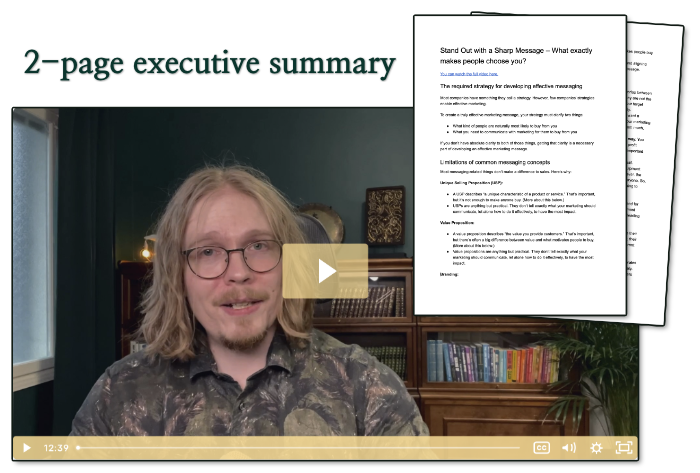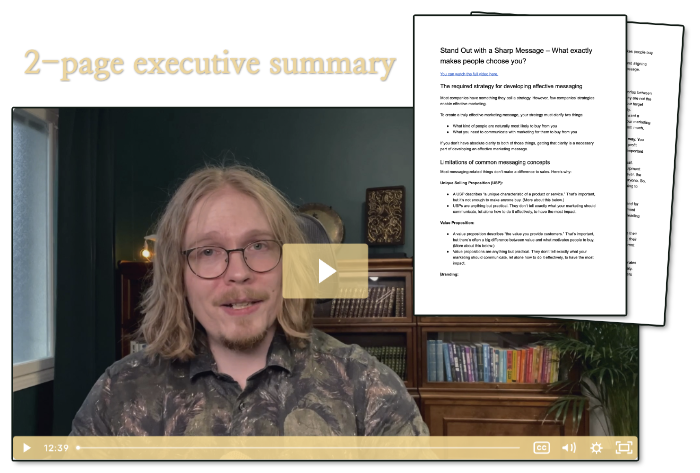Breaking a plateau is rarely as difficult as it seems. And the ways to do it are generally the same regardless of what skill you’re developing.
Although business and marketing are more complex than most typical skills (e.g., playing guitar or climbing, which I’ll use as examples), the principles are the same.
The basic steps (below) are usually enough, and the extra tips (at the end) generally break even the most persistent plateau.
So, next time you hit a plateau and start to feel like you can’t make progress, go through these steps. Odds are you’ll break the plateau sooner than you’d think.
3 steps to braking a plateau
1. Get clear about what the next level is
The first thing to do is figure out what would be the “next level.” It has to be clearly the next level—not just a slight improvement compared to where you are now.
If you’re playing guitar, the next level could be playing a song that’s clearly too hard for you now. If you’re climbing, the next level could be a route that’s a couple of grades higher than your previous best.
In business, the next level could be an order of magnitude more sales. Thinking of 10% more sales as the “next level” isn’t effective. It doesn’t require a clear jump in skills.
Breaking a plateau with gradual, almost unnoticeable improvement and optimization can work, but it’s frustratingly slow.
2. See the steps to the next level
The second step is about seeing how you get to the next level. There might be lots of routes to choose from, which is often one of the reasons for plateauing in the first place. You need to choose something and stick to it for long enough to see meaningful improvement.
If you’re playing guitar, maybe the song you want to play requires you to learn how to use really awkward barre holds, which also helps with left-hand finger agility overall. If you’re climbing, maybe you need to learn how to keep more weight on your feet, which also means improving your body positioning.
In business, you’re likely to have endless options to choose from. Getting someone who understands the big picture to point out what you should focus on can easily save you months or years of trying different things. (Yes, I can help with that.)
The key thing is to figure out what’s holding you back the most, so once you fix it, you see meaningful results. Note that it doesn’t always mean immediately seeing more sales. Not all steps forward show up as sales directly—some of the most important steps just enable good, consistent results down the line.
Maybe you need to learn to make your offers more compelling. Maybe create ads that get more people to click. Maybe learn to close in a one-to-many situation (e.g., videos, webinars, speaking on stage, sales pages).
3. Practice in a way that forces you to adapt
The third and final step is finding a way to practice those skills in a way that forces you to adapt. Many exercises only keep you at your current level.
One way to describe a plateau is “lack of adaptation.”
You can play the basic barre Fm chord thousands of times without learning to do much more. You can climb the super-easy routes endlessly and be stuck.
If you’re trying to break a plateau, doing the easy things over and over is rarely the solution. It might work eventually, but incredibly slow progress is what we’re trying to avoid here.
In business, maybe you should try to sell with a video for the first time. Or maybe you should duplicate your sales page and only change the offer’s details in the new one. Or maybe try writing a blog post with the specific goal of getting readers to subscribe to your email list.
If those sound too easy, try charging twice as much for something that takes you 90% less time to deliver. That should get you thinking.
Extra tips and notes for breaking a persistent plateau
- The “next level” you aim for should be so high that even before you reach it, you notice having broken the plateau. If the goal doesn’t force you to think of something new (not just “more of the same a little better”), think of a different goal.
- Focus on only a few things (or just one thing) at a time, so you can make progress in those faster. At least only practice one skill at a time, even if you have a few skills to train. Spreading your efforts across many things is often a major reason for the plateau.
- It’s much harder to create big jumps in some skills than others. The simpler the skill, the harder it is. Fortunately, business is anything but a simple skill, so there are always lots of ways to break a plateau if you know where to look.
- Also, don’t forget to model others (see below)…
See how others skip the learning curve
If most people make slow progress in what you’re trying to learn, but a few people skip the learning curve, figure out what they did differently.
Did they spend most of their time practicing coordination between fingers (playing guitar)? Did they focus on slabs, instead of overhanging routes (climbing)?
Did they obsess over their offer, message, and other basics more than what tactics they used (business)?
Many non-marketing-experts think that the pros get great results because of how well they use certain marketing tactics (like social media, FB ads, or funnels). But 95% of the difference is how well they did the basics first—the tactics are only the last (but the only clearly visible) step.


